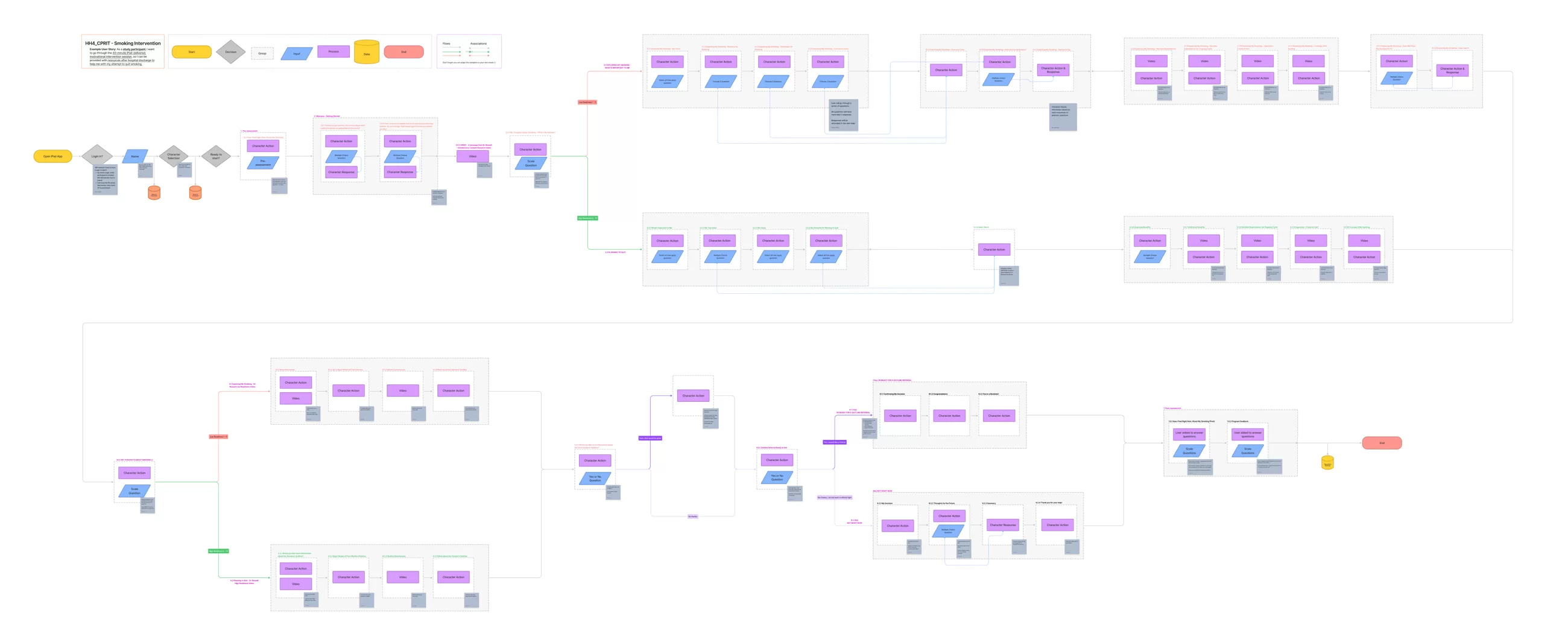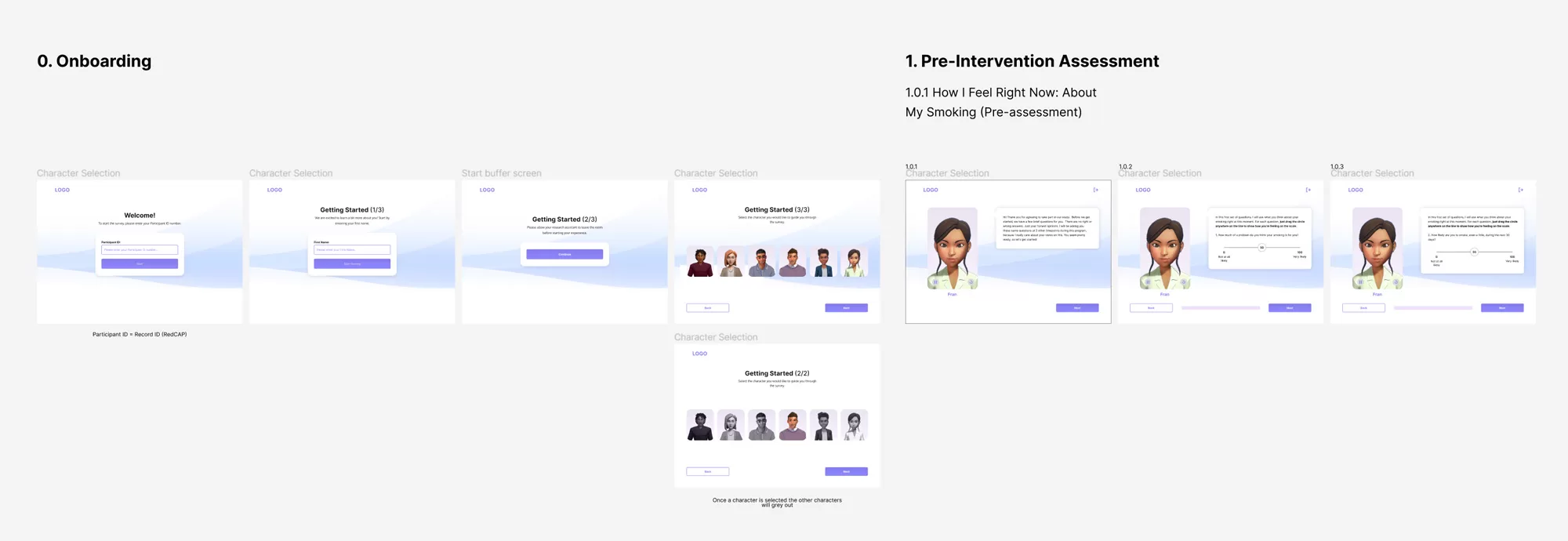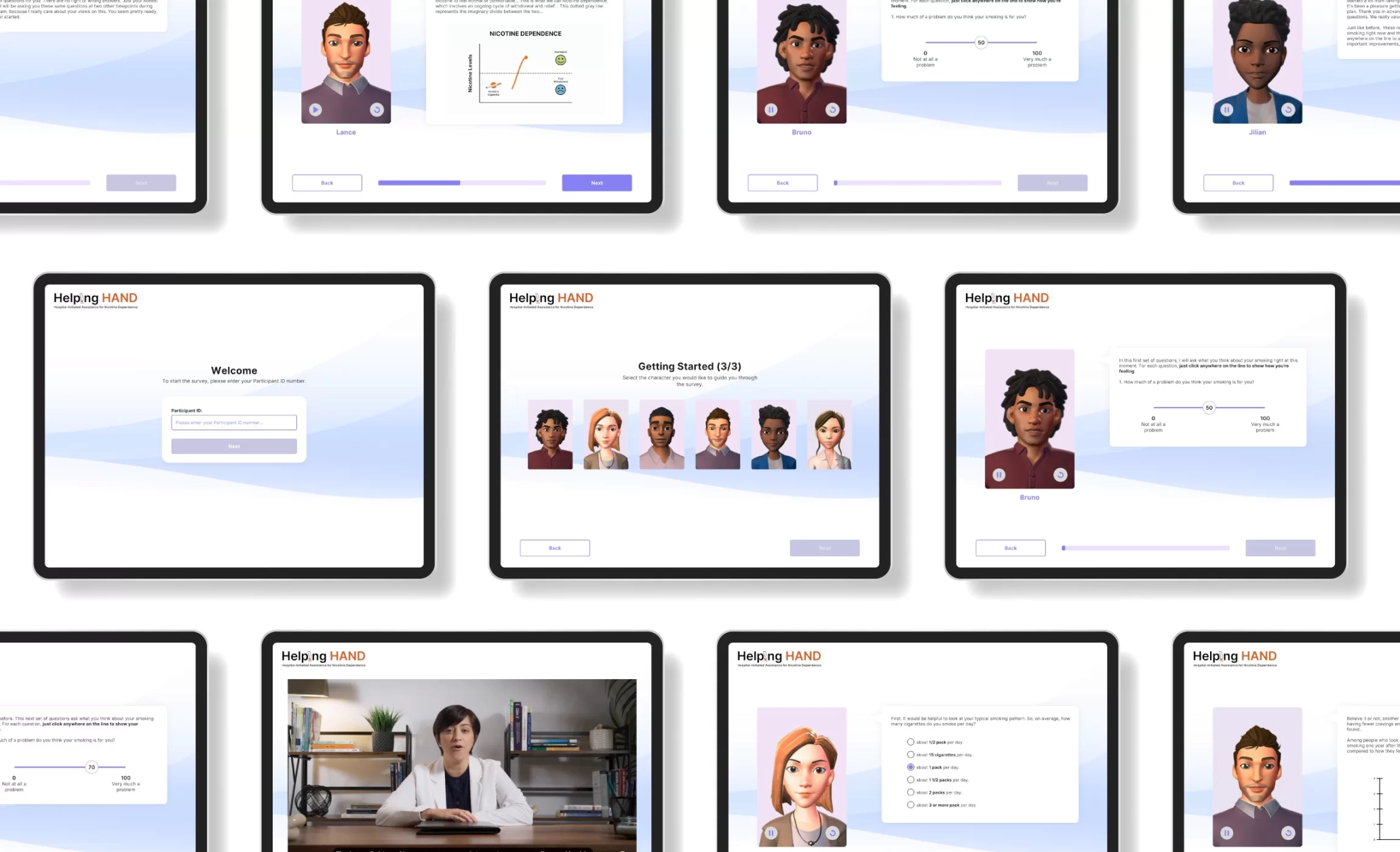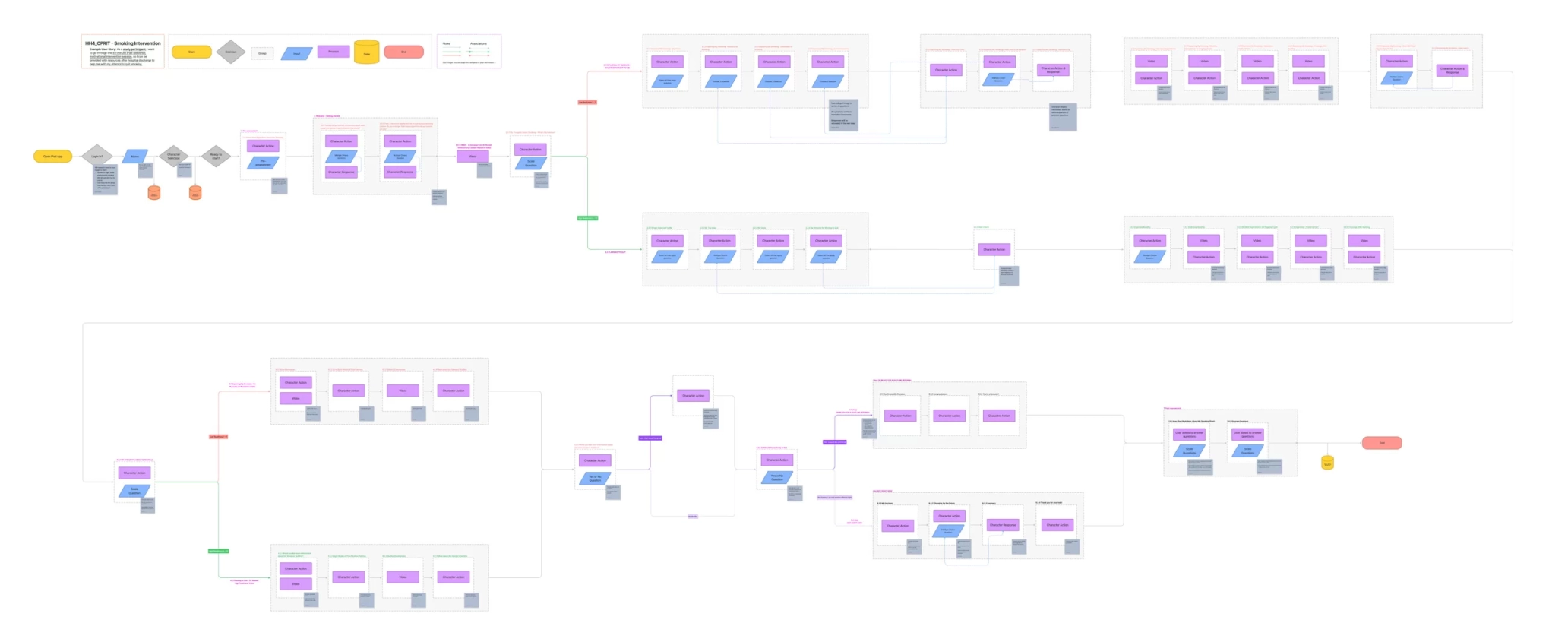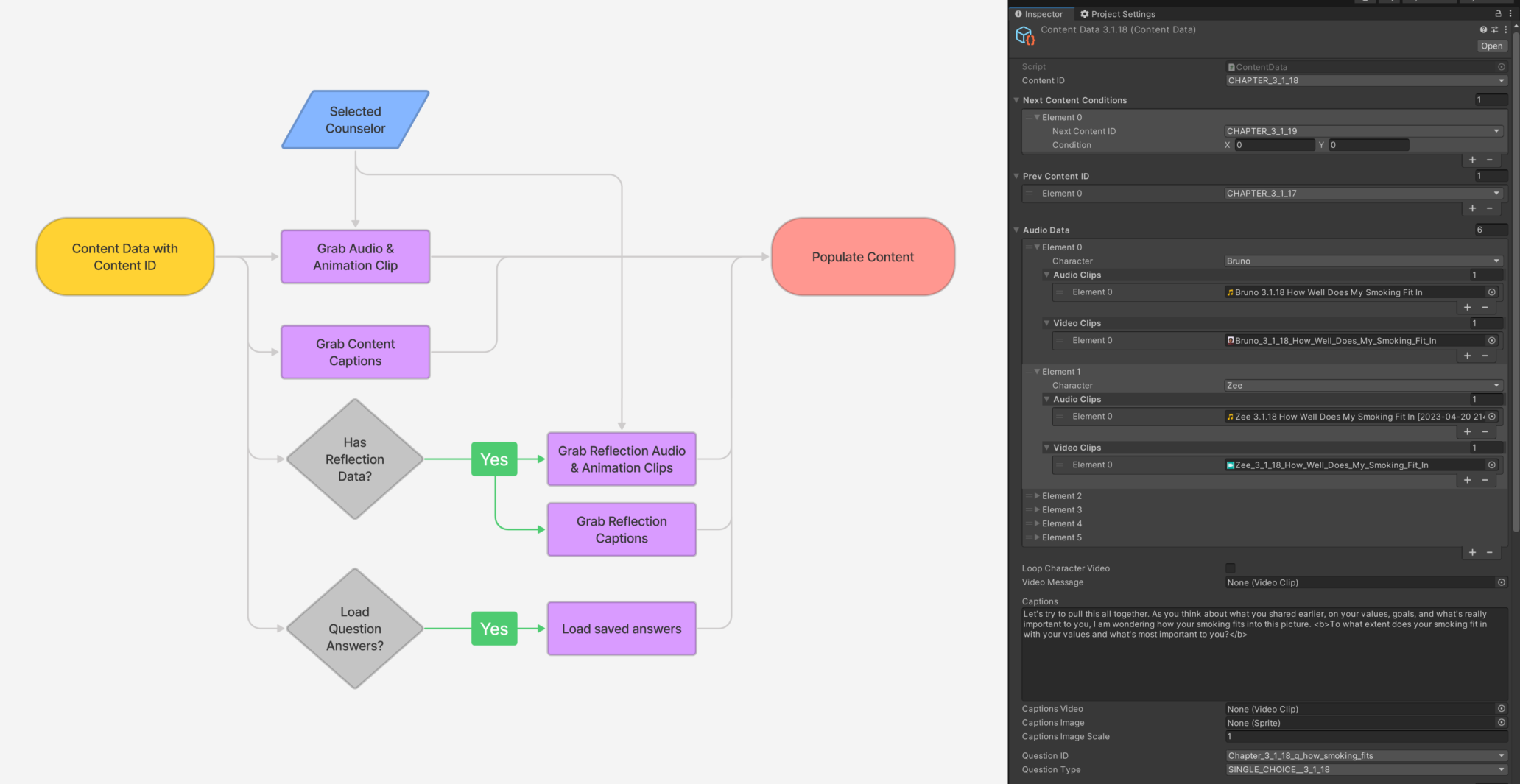The University of Texas at Austin (UT), supported by the Cancer Research and Prevention Institute of Texas (CPRIT), collaborated with Brain Spice Labs to revamp their smoking cessation iPad experience for hospitalized patients. The 40-minute intervention, rooted in Motivational Interviewing, utilized animated characters, physician testimonials, and integration with REDcap for data collection.
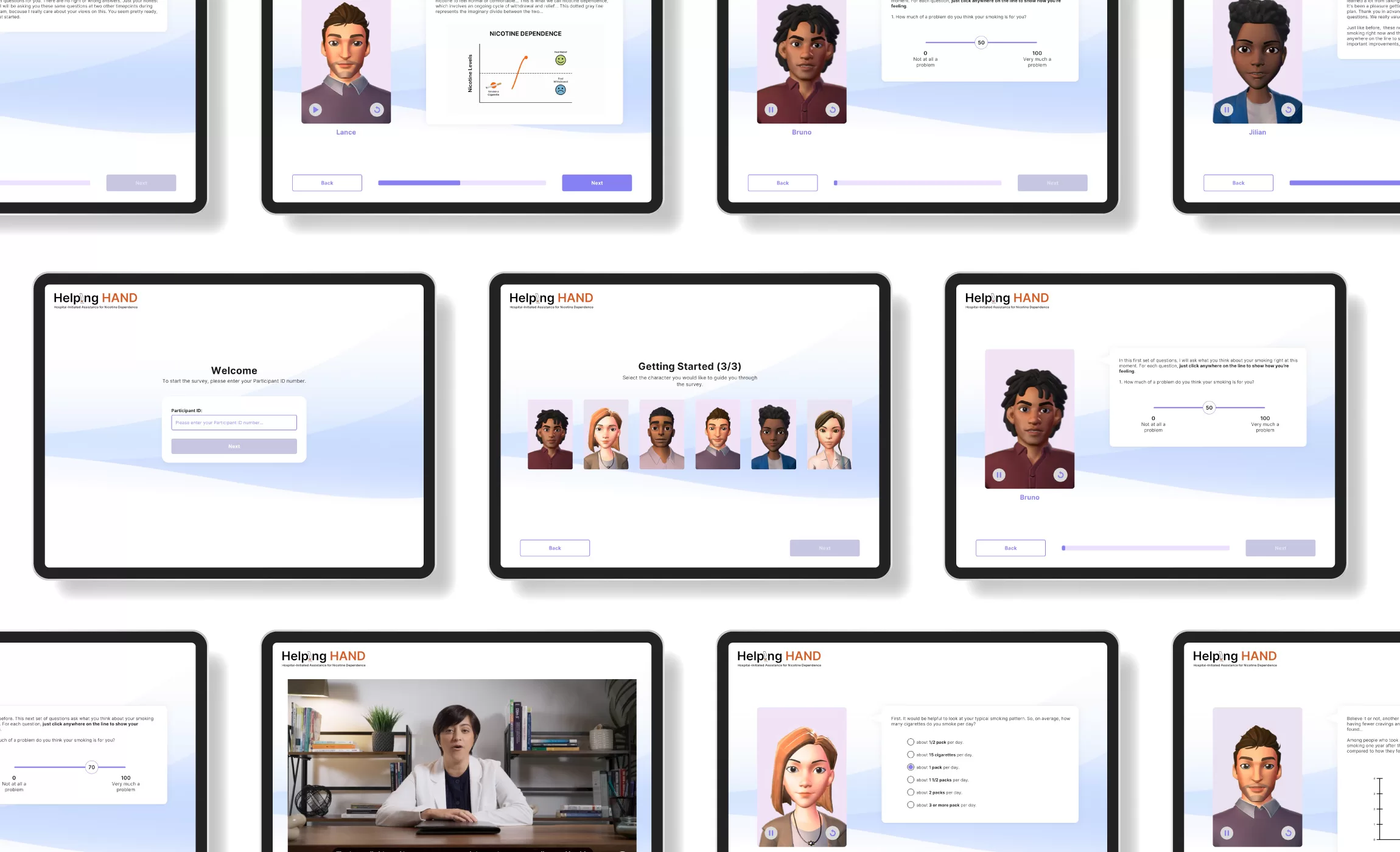
Problem Statement
The existing intervention, while successful, needed an upgrade to enhance engagement and user experience. UT sought a technology partner to improve the design, usability, and effectiveness of their smoking cessation app.
Design Goals
• Visual Update: Create an aesthetically pleasing app to captivate users visually.
• User Engagement: Develop an app that effectively implements the Motivational Interviewing style to engage users actively.
• Counselor Variety: Introduce a selection of characters as counselors for users to choose from.
• Educational Content: Produce high-quality videos featuring a physician’s advice and real-life testimonials.
• REDcap integration: Integrating the app with REDcap for seamless data collection.
Research
Methodology:
- Semi-structured Interviews: Conducted 8 interviews with patients receiving treatment at Seton Hospital to understand user needs and preferences.
- Usability Testing: Evaluated the app prototype through user testing with 8 individual sessions. Observed user interactions and conducted follow-up interviews to evaluate the app’s usability, user experience, and content effectiveness.
Key Findings:
- Supportive Design: Patients need a non-judgmental app environment with clear, concise information.
- Engaging Content: Informative content on quitting benefits (financial, health) resonated with users. Specific examples and summaries were valuable.
- Character Diversity: While virtual counselors were well-received, users requested more diverse appearances.
- Improved Interface: The interface needs better dynamism, text formatting, and accessibility features.
Insights and Recommendations:
- Content: Refine content to be more relatable and in-depth. Address requested topics like mental health connections and social pressures. Remove inauthentic language and ensure content delivery feels genuine.
- Design: Introduce a wider range of virtual counselors with diverse appearances to cater to user preferences. Enhance the app’s design and accessibility with improved text formatting, and relevant video content.
The Counselors
UT wanted a group of counselors that users could choose from. The team conceptualized three different sets of six characters to serve as counselors for the user interviews. They unanimously chose the 3D characters and based on user feedback, we refined our designs and prepared the characters for animation and voice acting to ensure maximum engagement and relatability.
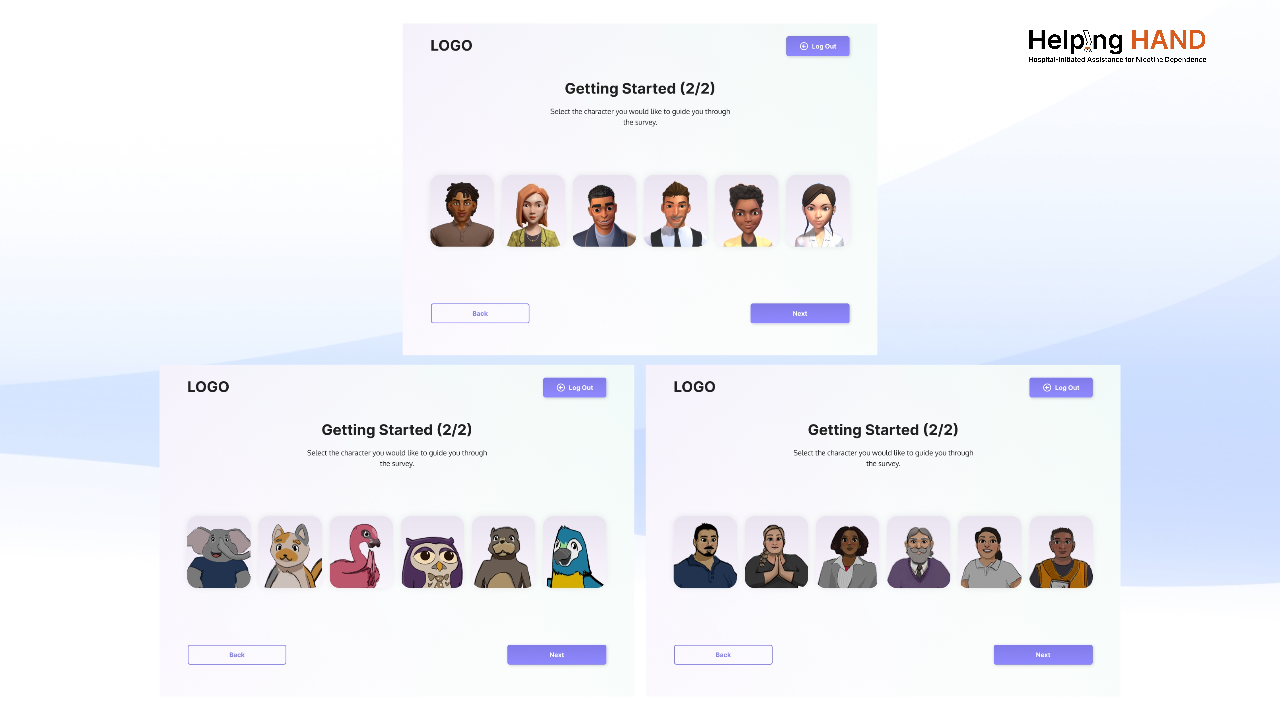
UX Process
An important aspect for the user experience was visual consistency. The smoking cessation app involved a systematic and user-centric approach to support individuals in their journey to quit smoking. First, the content provided by UT had to be processed and organized into manageable blocks for the user interface and experience.
I worked together with our designer by providing key insights and feedback on the designs and interaction flow. We went through various iterations based on internal testing to tweak and streamline the user experience, and on how features such as the 3D characters and content display could be best implemented.
Development
Besides being the UX designer, I also worked as the developer on this project. Implementing all user interfaces, content, and app development. The challenge here was managing the amount of data. The majority of the content consisted of animations, voice overs and dynamic text. Content had to be displayed based on the user’s (past) input. I developed a system to easily reference and grab content that needed to be displayed by using unique identifiers and creating asset files to manage over 900 audio files and 500 animations.
Another requirement was to integrate REDcap to seamlessly send user data to UT. This involved setting up data collection systems and implementing the REDcap API to securely transmit user data for research purposes.
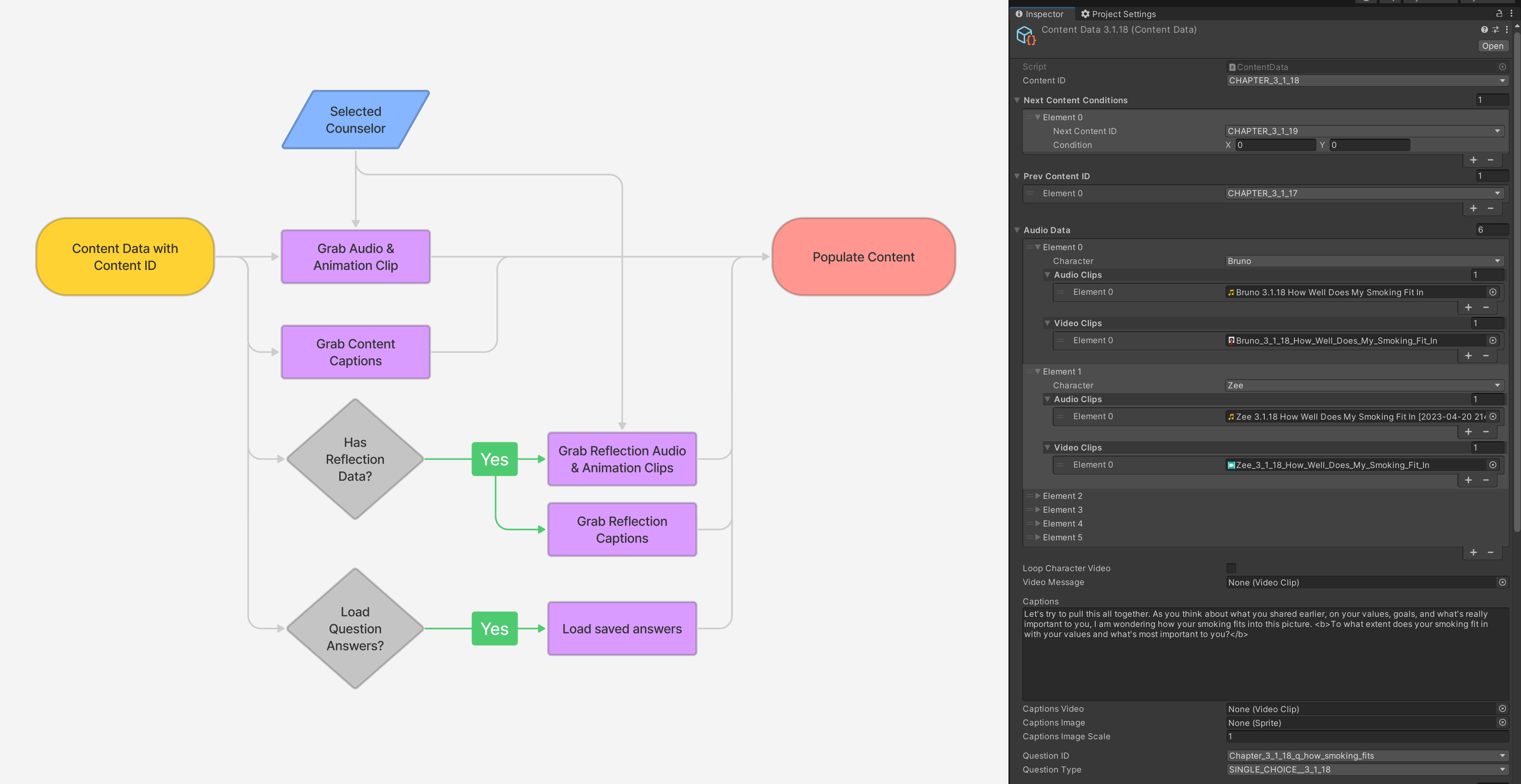
Outcome
The revamped smoking cessation app is now live and actively assisting patients on their journey to quit smoking. Our collaboration with UT has resulted in a user-friendly experience that seamlessly blends technology with compassionate support. The app’s engaging counselors, informative videos, and seamless data collection capabilities empower users to take control of their health.
Conclusion
This collaborative effort between UT and Brain Spice Labs has resulted in an innovative and user-centric smoking cessation app, addressing the unique needs of inpatient users and contributing to ongoing research in smoking cessation interventions. As the study progresses over the next three years, we remain committed to providing ongoing support and maintenance. This includes regular updates, proactive QA, and continued integration with REDcap to ensure the app meets the evolving needs of UT’s research team.
